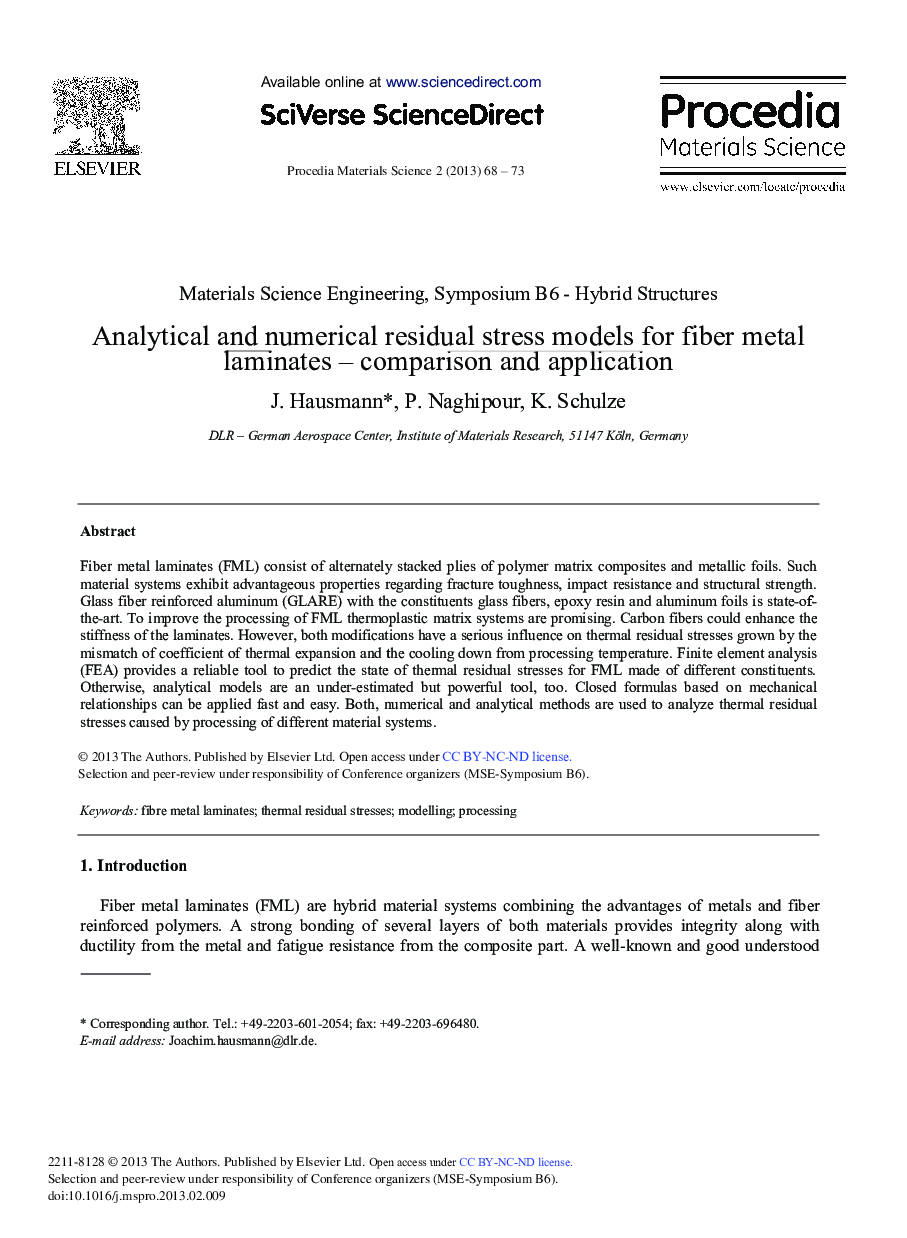| Article ID | Journal | Published Year | Pages | File Type |
|---|---|---|---|---|
| 1634264 | Procedia Materials Science | 2013 | 6 Pages |
Fiber metal laminates (FML) consist of alternately stacked plies of polymer matrix composites and metallic foils. Such material systems exhibit advantageous properties regarding fracture toughness, impact resistance and structural strength. Glass fiber reinforced aluminum (GLARE) with the constituents glass fibers, epoxy resin and aluminum foils is state-of- the-art. To improve the processing of FML thermoplastic matrix systems are promising. Carbon fibers could enhance the stiffness of the laminates. However, both modifications have a serious influence on thermal residual stresses grown by the mismatch of coefficient of thermal expansion and the cooling down from processing temperature. Finite element analysis (FEA) provides a reliable tool to predict the state of thermal residual stresses for FML made of different constituents. Otherwise, analytical models are an under-estimated but powerful tool, too. Closed formulas based on mechanical relationships can be applied fast and easy. Both, numerical and analytical methods are used to analyze thermal residual stresses caused by processing of different material systems.
